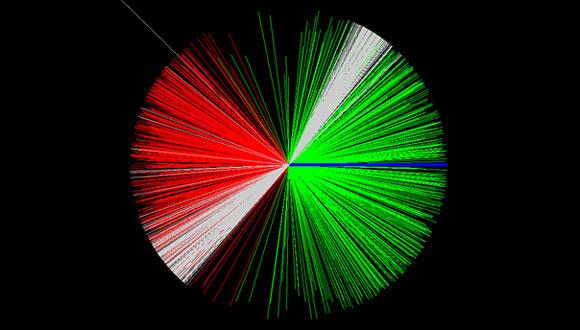Joint Seminar in Nuclear Physics
Zoom: https://huji.zoom.us/j/86307696195?pwd=QVR5WlI1d3plNFltdUdmWVZCOHNJdz09
PROGRAM:
12:30 - 13:00 - Get together
13:00 - 14:00 - The Zg distribution of heavy flavor jets in dense Quark Gluon Plasma, Boris Blok, Technion
Abstract:
We start by reviewing the BDMPSZ-ASW approach to jet quenching in quark gluon plasma, and the idea of using the jet substructure to study the quark gluon plasma. We study the zg distribution for heavy flavor, i.e. bottom and charm quark, jets propagating through the dense QCD medium. We extend the late emission approximation for ASW formula to heavy flavors. We consider both the normalized and Njet normalized zg distributions, and the ratio of the latter distributions to the vacuum ones, called the R ratio. We demonstrate that since there is no collinear singularity in the medium, there is no principal need to use the Sudakov safety technique for medium-induced emission (MIE). We see that contrary to the vacuum case, the normalized zg distribution is sensitive to the dead cone angle value. In particular, for the case of Njet normalized distribution with θg ≤ θcut, it is possible to directly probe the dead cone gluons in the medium. Our results can be useful to guide the experimental measurements of the heavy flavor jet substructure in dense QCD medium. based on the preprint e-Print: 2312.15560 [hep-ph] by B. Blok and C. Wu.
14:00 - 14:30 - Coffee break
14:30 - 15:30 - Neutron production yield from proton and deuteron beams in the 20–45 MeV range on thick liquid gallium-indium and lithium targets, Arik Kreisel, Soreq Nuclear Research Center
Abstract:
In the International Atomic Energy Agency report on compact accelerator-based neutron sources, IAEA-TECDOC-1981, Table 1 lists the typical source strength necessary for different techniques using neutrons. According to that table a neutron source of 1e15 neutrons per second is strong enough for almost all neutron techniques. The Soreq Applied Research Accelerator Facility (SARAF) is being built as a high current (5 mA), low energy (40 MeV), proton/deuteron, compact accelerator-based neutron source. SARAF has developed a liquid gallium-indium jet target for its neutron source. In this talk we describe an experiment that we performed to measure the thick-target neutron yields from gallium-indium and lithium. Our results show that a liquid gallium-indium jet target could provide the 1e15 neutrons per second source needed for SARAF and should be considered as a possible target and neutron source also for other facilities of its kind.


